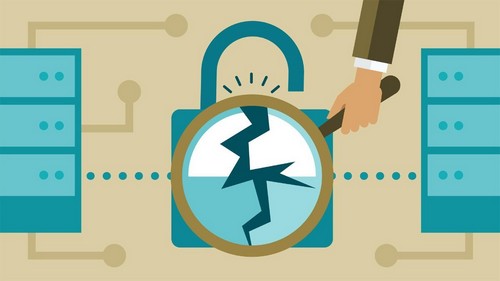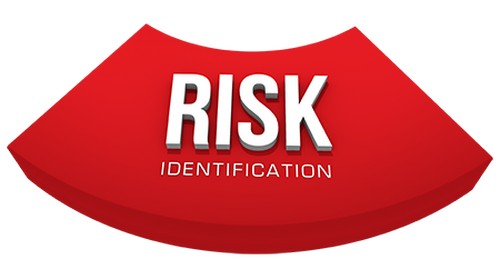Risk identification is the process of determining risks that could potentially prevent the program, enterprise or investment from achieving its objectives. It includes documenting and communicating the concern.
Risk identification is the first step towards risk management. The main objective of this step is early identification of events that can occur in the future and can have negative impacts on a project or an organization and affect the achievement of goals.
These assessments are done with respect to programs, investment decisions, deciding alternatives and operational or cost uncertainty. Identification needs to be parallel to the type of assessment in order to make risk-informed decisions.
It is the process of taking stock of an organization’s risks and vulnerabilities and raising awareness of these risks in the organization. It is the starting point for understanding and managing risks – activities central to the effective management of financial institutions.
Table of Contents
What is Risk identification?
For any program or organization, the first step is to identify the goals and objectives and then heading to a mutual understanding amongst the team to work towards success. This creates a context for identifying risk and then helps in the assessment.
There can be multiple sources of risks and to identify them the scope, cost estimate, and schedule has to be keenly reviewed, keeping in mind performance challenges and stakeholder expectations. The firm has to be aware of key performance parameters, plans discussed, implementation challenges, the firm’s ability to handle threats, safety, security, vulnerabilities and more.
Historical data on projects and risk lists provide valuable information to improve the identification process. It’s a learning process as it progresses, more insights are gained and adjustments are made according to current understanding and new risks keep coming up throughout the cycle.
What is learned through Risk Identification?
This process guides the firm or the teams through the operational nature of capabilities which help appreciate the gravity of risks and the impacts it could have on the users. It’s critically known as realizing the real-world impact that occurs if a risk arises during the operational stage.
It is learned that some risks are acceptable as long as the firm is able to accomplish the mission but it is a task to explain the members or users the risks they need to accept and provide them with alternatives. One learns technical maturity which is required in the competitive market, to assess risks more effectively.
It also comes to notice that the skills or experience of the developers or stakeholders can lead to risks. So one has to be on the lookout for insufficient skills and try to fill the gaps as much as possible and along with that educate the members of the team with corporate skills and provide exposure.
Cost estimates also help in considering risks, because as we proceed with the identification and make changes in the programs, the cost estimates also evolve simultaneously and thus they do provide valuable insights into risk identification.
Benefits of Risk Identification
From the initiation of a project to its completion risk is inevitable. Risk always exists and is more significant in larger initiatives that involve a more significant investment.
The important advantage of risk identification is that it helps completely analyze and find out what risks need to be addressed which are based on likelihood and impact. Then they are quantified according to cost or the right time to address them.
Another advantage is risk identification requires the knowledge of the full scope of a project which helps to think thoroughly about it and weigh the pros and cons well in time. It helps while devising mitigation strategies to control the risks.
All risks that are identified can be resolved with a plan without compromising with the objectives of the project and the end result required. All the assumptions can be listed down and analyzed strategically, one at a time. The analysis helps in removing potential inaccuracies at the beginning of the project itself.
This also means that risks are not always negative they can positive which may play a part in achieving the goals of a project. They can lead to opportunities that were unplanned but show up during the identification process and the team or firm can make the most of these ‘opportunity risks’.
Problems of Risk Identification
Although it has a lot of advantages there are certain disadvantages of risk identification like there may be unrecognized risks and risks that are assessed may not occur. The risks are mostly tentative and subjective because of lack of concrete criteria to base the risk upon so they are mostly the guesses of expert judgment which may or may not always turn out right.
This fluently leads to the next weakness which is the difficulty to identify and select the right stakeholders for risk assessment. In some cases if the risks are described too abstractly they can’t even be put to test, it is very essential to be certain about the risks and have concrete explanations, so as to chalk out an absolute solution to come out of it.
Need for Risk Identification
The ultimate need for risk identification is to minimize the negative impact of any losses on the overall benefits of a project or to an organization’s growth and to maximize the positive impact. Awareness of potential risks reduces the surprises that come along the way during the course of a project and thus helps improving strategies for achieving goals effectively.
The basic purpose is to gain information for moving towards the next step of risk management that is risk analysis. It is about reviewing every input variable, activity, key material and resource that goes into a project.
It is a thorough preparation for crisis situations in advance. This process has to occur but one needs good techniques for identification of these risks. Firms are quite ignorant about this process but lately, it has been realized that it is very important for a project’s success.
It creates an opportunity for improvement and helps the firms put their best foot forward because analysis of what can be the next step is directly related to risk identification. If the team cannot identify these risks then they cannot really earn the desired value or achieve the targeted success.
Techniques of Rish Identification
Risks are identified by bringing the team together; the organization has to bring together the project team, board, stakeholders and discuss important questions about the goals and then jot down what can be the risky elements in the entire period of the project. There is a need to have open discussions on what could possibly go wrong and what hindrances are most likely to occur?
What kind of harm will it cause to the project can it be avoided or covered up? It is very important to identify the threats that come along with the project and eventually find out the opportunities that risks create and use it for the overall benefit of the project.
The objective of risk identification is to identify all possible risks, not to eliminate risks from consideration or to develop solutions for mitigating risks—those functions are carried out during the risk assessment and risk mitigation steps.
Risk identification is definitely the need of the hour ineffective risk management. Not only does it provide awareness but it also helps to bring out positive outcomes, the process is quite helpful and motivates the team to brainstorm and leads to complete success and achievement of potential goals and profits.
Liked this post? Check out the complete series on Risk Management



